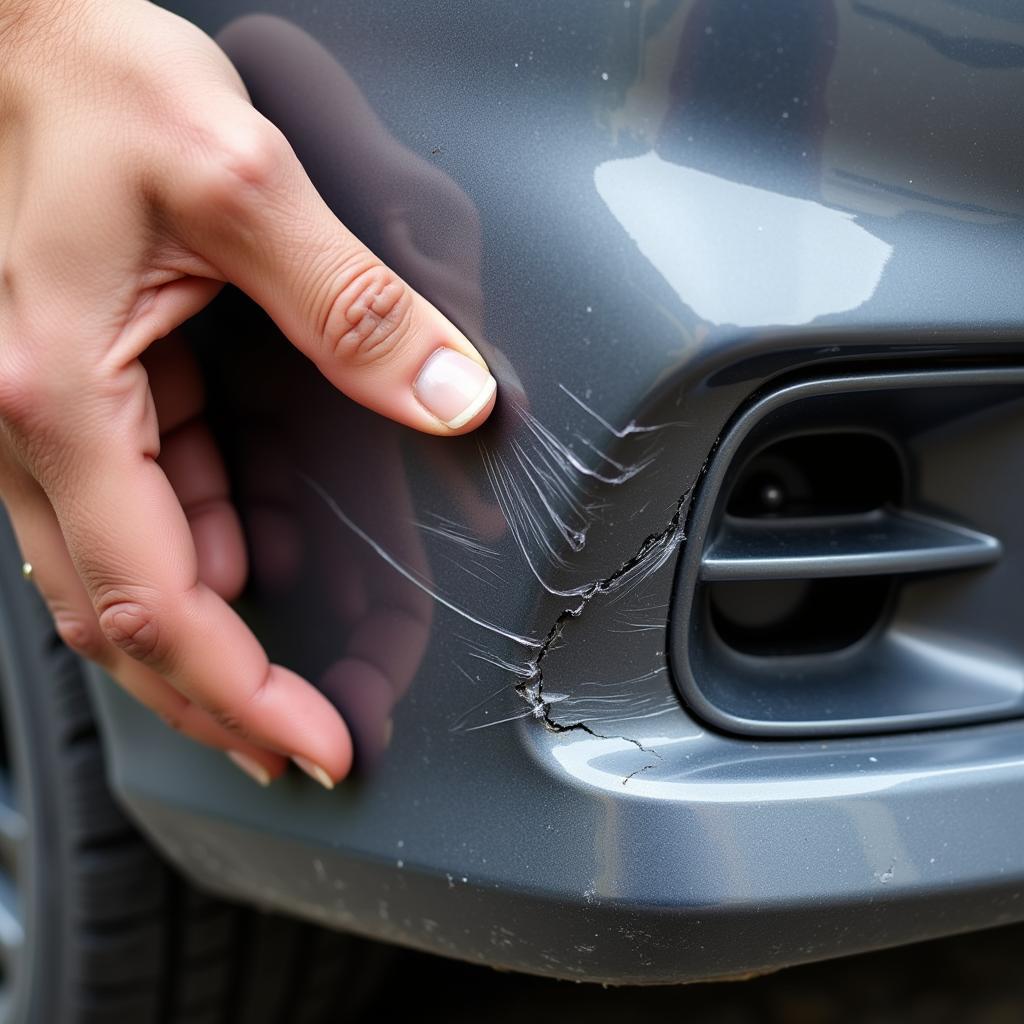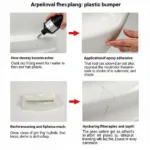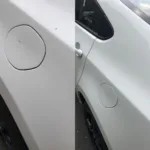Can you repair damaged car bumpers? Absolutely! Minor bumper damage, like scratches, scuffs, and even small cracks, can often be repaired at home or by a professional, saving you the cost of a full replacement. Whether you’re a DIY enthusiast or prefer professional help, understanding the repair process and options available is crucial.
Fixing a damaged bumper can seem daunting, but with the right knowledge and tools, it’s often manageable. From minor scuffs to more significant dents, various repair methods cater to different damage levels and budgets. This article will explore the different types of bumper damage, the repair process, and when professional help might be necessary. Let’s dive in!
Assessing the Damage: Know Your Bumper
The first step in any bumper repair is assessing the damage. Is it a minor scratch, a deep gouge, a crack, or a dent? The type of damage dictates the appropriate repair method. Understanding your bumper material is also essential. Most modern bumpers are made of plastic, specifically thermoplastic olefin (TPO) or polypropylene (PP), while older vehicles might have fiberglass or even metal bumpers. Each material requires a different repair approach.
DIY Bumper Repair: Minor Scratches and Scuffs
For minor scratches and scuffs, a DIY approach can often suffice. You can use a rubbing compound, followed by a polishing compound, to remove superficial imperfections. How to repair plastic car bumper provides a step-by-step guide for this process. Remember to clean the area thoroughly before starting and work in a well-ventilated space.
Deeper scratches might require a touch-up paint pen or a spray can specifically designed for car bumpers. Be sure to choose the correct color code for your vehicle. Proper surface preparation, including sanding and priming, is vital for a seamless and long-lasting repair.
Repairing Cracks and Dents: A More In-Depth Look
Cracks and dents require more advanced repair techniques. For plastic bumpers, plastic welding or using a specialized plastic repair kit is often the best solution. Can I repair car bumper with regular soldering iron answers a common question about using readily available tools for this type of repair.
For larger dents, you might need to use body filler, commonly known as Bondo. How to use bondo to repair a plastic car bumper offers a detailed guide on using Bondo effectively. Remember, proper sanding and shaping are crucial for achieving a smooth and professional finish.
When to Seek Professional Help
While many minor bumper repairs can be done at home, some situations warrant professional assistance. Significant damage, such as large cracks, deep dents, or damage affecting the bumper’s structural integrity, is best handled by a qualified auto body repair shop. If you’re unsure about your DIY abilities or the extent of the damage, seeking professional advice is always recommended. Car bumper repairs milton offers local repair services.
“Severe bumper damage often requires specialized tools and expertise that most DIYers don’t have,” says John Smith, Certified Automotive Technician at Smith Auto Repair. “Attempting complex repairs without proper training can lead to further damage and increased costs in the long run.”
Choosing the Right Repair Shop
If you decide to go the professional route, choosing a reputable auto body repair shop is essential. Look for shops with certified technicians, positive customer reviews, and a clear pricing structure. Asking for quotes from multiple shops allows you to compare prices and services. Car bumper hole repair offers insight into professional repair options for specific types of damage.
“A good repair shop will thoroughly assess the damage, explain the repair process, and provide a detailed estimate before starting any work,” adds Maria Garcia, owner of Garcia Auto Body. “They should also be able to answer any questions you have and address your concerns.”
Conclusion: Can You Repair Damaged Car Bumpers? Yes, With the Right Approach!
Can you repair damaged car bumpers? Yes, you often can! From minor scratches to more significant cracks and dents, various repair methods are available. While DIY repairs can be cost-effective for minor damage, professional help is often necessary for more extensive issues. By understanding the type of damage, the repair options, and your own DIY capabilities, you can make informed decisions about restoring your bumper to its former glory.
FAQ
-
What is the most common type of bumper damage?
Scratches and scuffs are the most common types of bumper damage. -
Can I use super glue to repair a cracked bumper?
While super glue might seem like a quick fix, it’s not recommended for repairing cracked bumpers. It’s not strong enough to withstand the stresses and vibrations a bumper experiences. -
How long does a professional bumper repair typically take?
The repair time depends on the extent of the damage. Minor repairs might take a few hours, while more significant damage could require a few days. -
How much does it cost to repair a car bumper professionally?
The cost varies depending on the type and extent of the damage, as well as the labor rates in your area. It’s always best to get quotes from multiple shops. -
Can I paint my bumper myself?
Yes, you can paint your bumper yourself, but it requires careful preparation and the right type of paint. -
What is plastic welding?
Plastic welding is a technique used to repair cracked or broken plastic parts by melting the plastic together. -
How can I prevent bumper damage?
Park carefully, avoid hitting curbs, and be mindful of other vehicles when parking or driving can help prevent bumper damage.
Other Questions You Might Have
- How do I repair a dented metal bumper?
- What are the best products for repairing plastic bumper scratches?
- Can a damaged bumper affect my car’s safety?
For further assistance, please contact us via WhatsApp: +1(641)206-8880, Email: [email protected]. We have a 24/7 customer service team available to help.



